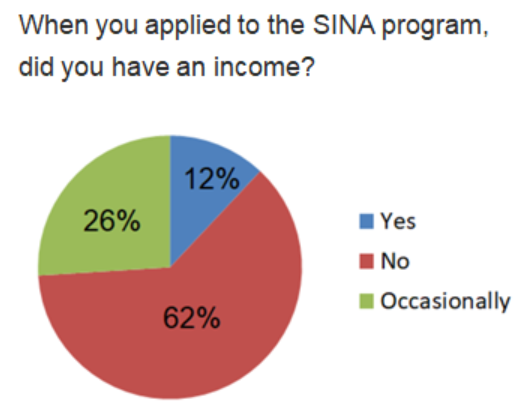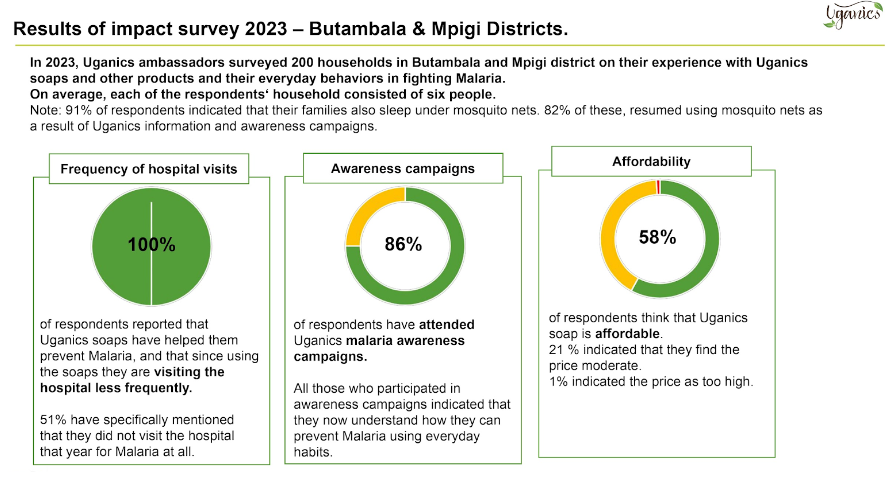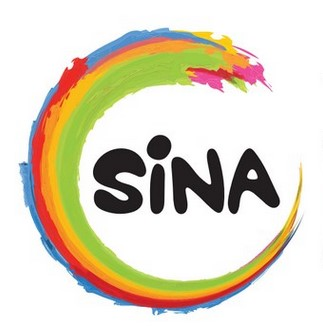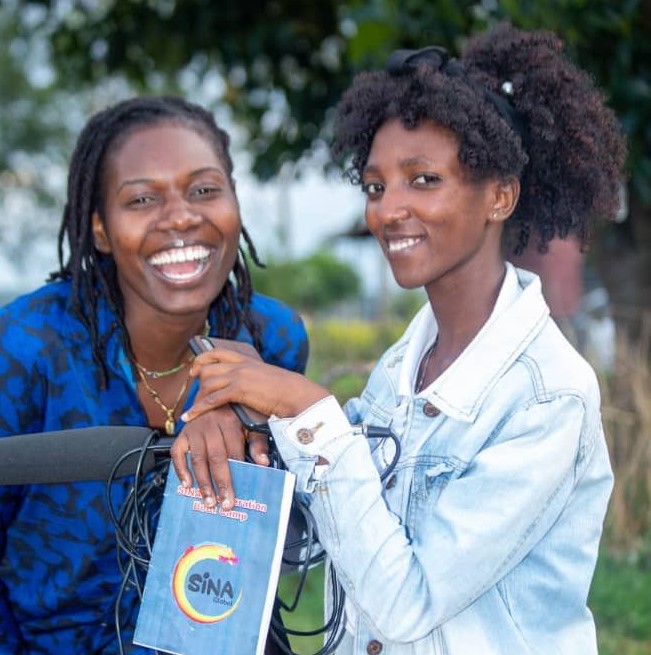by C. Charles Bley
Uganda-based and growing, centered on self-awareness, community, and social entrepreneurship, offering unemployed and underemployed young adults an immersive hybrid of livelihood intervention and business training; A 2023 study investigating the influence of SINA (Social Innovation Academy)’s first decade on the ground suggests graduates of the program reliably generated a 5x–and in some cases, 10x–overall return on their cost of attendance.
Deploying new models of education in developing nations is essential to socioeconomic growth. Yet, adequate funding may be difficult to secure, even for established providers of alternative education. The need is evident: there exist regions and communities around the globe which are utterly impoverished or violent, where adversity is a constant, opportunity nearly nonexistent, and education insufficient. Social Innovation Academy (referred to henceforth as SINA) was founded based on direct observations to that effect.
The Method: Gathering Evidence of Brighter Outcomes
This narrative means to offer insight into the question of future earnings per dollar spent on SINA training. It will reveal data and projections gleaned from a three-month study of 100 of its scholars, as compared to a control group of 100 individuals who were not able to gain admission into the program. The study was conducted and authored by independent consultant Rebecca Sarah Jawara, whose research instruments–in addition to direct observation at SINA’s flagship Mpigi community in Uganda, Jangu International–included in-person meetings, calls, and online surveys.
In order to comprehend the scope of the African youth unemployment crisis, it is important to see the study’s 200 participants not merely as a segment of the sub-population within SINA’s sphere of influence, but as representative of many thousands of young Africans. Unemployment being closely interrelated with displacement, the exact number is in constant flux. Displaced peoples are of particular import to the program. Uganda alone hosts around 1.5 million refugees, and 9 of SINA’s 15 campus-communities are currently based inside refugee settlements. However, both groups in the study consisted of individuals of a variety of origins, e.g., rural, urban, and refugee.
Underpinning the study’s findings and, simultaneously, introducing the additional social return on investment (SROI) figuring into the equation, this narrative will present select employee headcounts and their earnings as attributed to enterprises initiated and owned by SINA-trained entrepreneurs. Data supplied to that effect is current as of this writing, and was solicited directly from the entrepreneurs. Certain other factors contributing to broader SROI will also be discussed.
Limitations: Micro and Macro
Because a gender metric was not recorded for all participants, it does not figure into Jawara’s final analysis. Gender-based inequality is relevant across Africa, however, and SINA’s legacy is inarguably one of intentional female uplift and independence. About 50% of those received by the program are female. 2/3 of successful enterprises initiated by program alumni are owned and operated by women, rivaling or outpacing various assessments of gender representation among pan-African CEOs.
Some participants in Jawara’s study were not comfortable sharing their age or exact earnings figures. Concerning earnings specifically, hesitance to disclose appears ascribable largely to societal norms; as offered by the researcher, a general aura of mystery can surround this topic. The phenomenon manifested as readily with business-owning alumni as with the 65-70% of the control group whose income remained low or nonexistent throughout the study. In such cases, average participant ages and generalized microeconomic data, respectively, were substituted.
Lastly, the “niche” nature of many SINA graduates’ products and services is somewhat confounding to the task of determining their exact value in the context of a broader economy (employment trends, average salaries). Social enterprises are, by design, highly community-oriented, addressing specific, localized needs which may not translate to other markets or wealthier communities. Therefore, useful comparative data–in this example, earnings of workers employed in analogous fields but who instead come from privileged backgrounds–is virtually nonexistent.
Key Findings: Beyond Why
The stark reality of youth unemployment, its effect on the individual, and on society, altogether encapsulate the need SINA works to satisfy. Per-person per-day income for Ugandan refugees was recently calculated at $0.11-$0.12. Many SINA scholars–refugee or not–are likewise in positions of survival and subsistence when they join the program. They earn (or receive the equivalent of) less than $1 USD a day, qualifying them as living in extreme poverty.
As depicted in the following graphic (from a preliminary survey conducted by the study’s author), nearly 2/3 of those surveyed reported having no income whatsoever at the time they applied to the program:

The range for the control group was $0-$85 USD per month with slightly more than half with no income whatsoever. After graduation, Jawara found, SINA alumni experienced a range shift in monthly income reaching $50-$130 USD. Overall, SINA alumni at about 5 years after graduation earned about 3 times more than the control group. Continuing on to the establishment of social enterprises by SINA alumni, approximately 50% were able to initiate their own enterprise. Of that, around three-quarters (74%) had sustained said enterprises.
Finally, per internal SINA impact assessments from 2021-2023, within the last three years its graduates’ social enterprises collectively attracted independent finance (investments, grants, prize money, etc.) totaling over $500,000 USD. This trend is exemplified by one participant’s report of around $1250 per month, earned through an awarded fellowship. The participant was among those who reported having no monthly income prior to SINA training.
Jawara calculated the average monthly cost of funding one residential SINA scholar to roughly $85 USD (or, $1350 for an average 16-month duration). In many instances within the program’s refugee settlement communities, the study showed that average reduced to around $800.
The comprehensive return on investment analysis revealed a monthly ROI of 46.875% and an annualized ROI of 4.03%, and found increased future earnings per dollar spent of 4.69x over a 10-year period.[1] This calculation does not account for salary increases (expected or unexpected), within the 10 years, nor for additional SROI, e.g., through jobs created (or expected to be) by SINA alumni through their social enterprises.
Alumni Becoming Job Creators
Employment opportunities for others, and the broader prosperity they beget, are a crucial byproduct of SINA scholars’ ingenuity. An individual employed by a social enterprise is an individual contributing to the SROI of the entrepreneur’s training. Although some enterprises can reasonably sustain only a few employees, others have expanded to the point of employing tens or dozens. Examples of note include the following:
Uganics: 32 full-time and 29 part-time employees (includes 13 volunteers)
Gejja Women Foundation: 28 full-time and 3 part-time employees; $80 USD per month average employee pay
Babykit: 10 full-time and 15 part-time employees; based in the Bidibidi refugee settlement; $50 USD per month average employee pay
Justev Building Systems: 2 full-time employees, $130 USD per month average pay; 28 part-time employees, pay based on construction performance
To date, 973 total jobs have been created by SINA graduates across 80 different enterprises. While obtaining reliable data from each of the employees is unfeasible, calculating conservatively based on a monthly minimum salary in Uganda of $36 USD, their jobs translate to a collective $420,336 USD in earnings. The subsequent economic activity made possible by alumni-created employment could conservatively add an additional 0.5x to 1x SROI per paid position.
Micro-Report: Uganics’ Multifold Return
Exemplary of the transformative power of SINA’s framework is Joan Nalubega, founder and CEO of Uganics. This growing social enterprise born at SINA produces mosquito-repellent soap addressing a major health challenge while providing paid employment for over 48 individuals, primarily women. Females also currently fill 75% of the 12 top positions (e.g., financial manager, stock manager, COO). Combined monthly salaries for those positions (which do not include CEO) total $1660 USD, which on its own equates to a more than 19x return on the average monthly cost ($85) of per-scholar SINA training.
Nalubega was among the subset of SINA scholars who had no income prior to training. And though an outcome this significant is only one “proof of concept” for SINA, she and her enterprise are particularly and holistically demonstrative of various why’s in livelihood intervention. The company’s viability can be identified in four key areas:
1. The social business is easily replicable, and as scalable.
2. The company provides legitimate, stable employment, benefitting not only the employees but creating subsequent waves of positive economic and social change for their families and communities.
3. By successfully applying a cross-subsidy model, Uganics has captured a market of both privileged and disadvantaged peoples; the purchase price of one bar at a tourist resort, for example, enables the company to sell two bars to rural Ugandans at a more affordable price.
4. Uganics’ lead product is relevant to anyone who lives or travels in places where mosquitoes are known to spread disease, and is scientifically verified to be effective.
Whereas measuring its economic influence (employment, salary, revenue, et al) is relatively straightforward, assessing Uganics’ overall influence on public health requires a long view and an understanding of the complex problem it was created to address. A 2023 company-led survey of 200 Ugandan households where the soap is used found an 88% reduction in Malaria cases, among other findings.

The presence of Malaria in Uganda alone has, historically, been high. When SINA was founded, the country had the sixth highest number of annual malaria deaths in Africa, with over 10,500 annually.
Therefore, an effective and affordable mitigation such as Uganics soap must be contrasted with the many costs of the alternative: out of pocket health care costs for already impoverished individuals and households (to include medication and transportation, estimated at $0.41-$3.88 USD per person per month of treatment); loss of workdays, income and education due to absence, decreased productivity, or decreased school attendance; permanent cognitive impairment in severely infected children, ultimately weakening Uganda’s primary and secondary education programs; loss of family, close contacts, or one’s own life. Some individuals are infected multiple times per year, burdening their households with costs and losses each time. To an already fragile economy, every one of these costs is a microshock, in every instance, per every infected individual.
Further comparison–in this instance, between the total operational cost of Uganics and the vast sums of money purportedly spent worldwide on the malaria crisis–is also warranted. According to a 2023 WHO report, funding to combat Malaria topped $4 billion USD in 2022, but almost $8 billion was needed, and the world remains at risk of losing the fight against the disease. Localized socially-conscious enterprises may be better suited for these tasks, while creating more stable employment in their target regions, thereby decreasing the need for charity. Neither regional nor global Malaria mitigation can compete with Uganics soap’s 88% preventive effectiveness and social return, and the cost differential is enormous.
More SROI Highlights: Gejja Women Foundation and Tusafishe
In 2023, the social enterprise Gejja Women Foundation produced and sold over 50,000 reusable sanitary pads. The resulting revenue allowed them to provide 5,000 free pads to girls in need, reducing instances of school absence during menstruation. The enterprise has also applied its profits to the sponsorship of four girls, allowing them to return to their education after having dropped out due to financial hardship.
Tusafishe has provided safe, clean drinking water for 5 years, and currently serves over 300,000 regular customers, mostly in schools, refugee camps, and disadvantaged communities. Through their community bio-sand water filters (which use moringa seeds), they have captured over 50,000 tons of Co2. As more filtering leads to less boiling of water, and given that the filters themselves require the planting of moringa trees, Tusafishe is responsible not only for carbon capture, but also avoidance and offset.
Outlook: The Promise in the Numbers
Considering all facts and figures supplied in this narrative, for every dollar spent on their training, past and emerging SINA scholars are certain to attain an average 10-fold ROI within 10 years. A number of them have already surpassed that benchmark within five years. This means the average $1,350 USD investment required to fund one scholar’s education in a SINA community generated monetary value worth $13,500 USD.
Individual economic metrics, though, are only part of the program’s legacy. It is evident that the Social Innovation Academy enhances its scholars’ personal and professional capabilities, and prepares them for meaningful careers based on the solving of problems faced in their communities. In effecting a range of social and environmental changes, creating jobs, growing their enterprises, and continuing to innovate, scholars and alumni become changemakers generating a multifold return on their training costs.
There is no shortage of young people in sub-Saharan Africa who would be well-served if SINA were able to continue its expansion. An independent randomized control trial toward further impact assessment is necessary to generate more data validating the above findings. Partners, stakeholders and investors who support this program make it possible for SINA to focus its attention where it does the most good.
[1]ROI was calculated using the formulas:
(Average Income Increase −Cost of Investment / Cost of Investment)×100%
Monthly ROI=(Cost of Investment/ Average Income Increase−Cost of Investment)×100%

